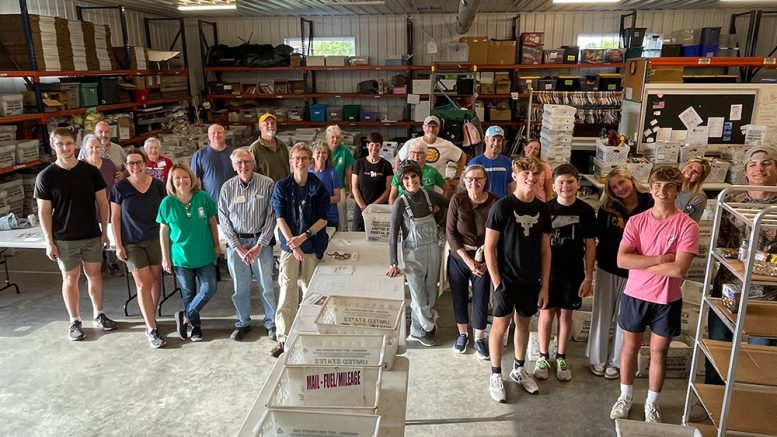By AMY ADAMS
news@readthereporter.com
Last Saturday was the annual Stamp Out Hunger Food drive put on the United States Postal Service and the National Association of Letter Carriers. The final numbers are not yet tallied, but tens of millions of pounds of nonperishable food is expected to be donated to food pantries around the country thanks to the generosity of countless Americans and the hard of the folks in collecting and distributing that food.
Now that Stamp Out if passed, what comes next?
Lend a helping hand
Cleaning out our pantries is great. What else can we do? We’re glad you asked.
“Personally, I was always one of those people who cleaned out their pantry when there was a food drive,” said Carrie Larrison, vice president and director of special projects at Open Doors in Westfield. “But now that I volunteer, I do things differently. When I see something I know we need that is on sale, I buy it. Keeping your eyes open on a regular basis makes the best use of your own money.”
Both Larrison and Anita Hagen of Hamilton County Harvest Food Band (HCHFB) recommend familiarizing yourself with what your local food pantry needs and share these suggestions for how to support your local food pantry on a regular basis.
- Check in with your local food pantry often to see what is most needed, then purchase items to donate when you see them on sale or as buy-one-get-one deals where you can still stay within your own grocery budget.
- Set up a monthly subscription to items that are in ongoing need and have them shipped directly to your local food pantry.
- Donate financially to your local food pantry. Often your dollar will go farther than if you shop on your own since food pantries can purchase bulk food at a discount. You can also donate to specific causes such as Meating the Need and Meals for Kids at hhchfoodbank.org/donate.
- If you have a garden and often find yourself with extra zucchini or too many tomatoes, go to hamiltonswcd.org/donateyourvegetables.html to find out where you can donate your produce overflow. Or consider planting a row for those in need.
- Volunteer your time. Many food pantries have SignUpGenius lists for volunteers to help sort and stock food, which is as needed as any commodity.
- Initiate your own food drive anytime at your office or through your child’s sports team. Or, on a larger scale, Hagen said HCHFB and your local food pantry are always looking for collaborations and partnerships.
- Lastly, participate any time you see a food drive, even if you just donate one item. Every little bit helps.
Don’t miss Pack the Cruiser coming up Saturday, June 1, from 10 a.m. to 2 p.m. In its eighth year, local police departments will be on hand at nine different Kroger stores throughout the area collecting food for the programs providing summer meals for local kids.
Need a helping hand?
If you or someone you know are in the position of needing more food than you have access to, Hagen recommends that you start by reaching out to your township trustee. Hamilton County is made up of nine townships whose mission is to help families and strengthen the community. They can provide a list of local food pantries as well as point residents to other resources, such as providing guidance with filling out SNAP applications. Find out more at hctaindiana.com.
Another useful resource, according to Hagen, is The Community Compass, a food assistance app and website through the Indy Hunger Network that can help you find food near you by ZIP code. Find it at communitycompass.app or where you download your apps.
You can also find a complete list of food pantries and meal programs across Hamilton County, go to tinyurl.com/HamCoPantriesApril2024.
Find out more at hchfoodbank.org.
Photos provided by Greg Garmong

